Along with the underside of feet, hair is one of my absolute favorite things to sculpt. By its very nature, there is so much variety in texture, volume, shape and movement. Add in the ability to style and embellish and *poof!* a cornucopia of possibilities! Different hairstyles can lead viewers to imagine eras, ages and worlds, dramatically enhancing the narrative qualities of a piece.
My primary medium is water-based clay. It is wonderfully tactile, smooth and protean – able to be transformed into just about anything that can be imagined. This characteristic offers a flexibility in options that can be almost overwhelming when it comes to choosing what kind of hair to put on a sculpture (unless you’re working on a portrait, of course). So today, I’ll share an overview of the process I use and the things I consider in creating a sculpted hairstyle from my imagination. At the end, I’ve included many pictures of sculptures I’ve done that incorporate various hair ideas and embellishments.
Braids are a design element I use frequently. I enjoy how the repeated pattern breaks up larger masses and the ubiquity of their presence in hairstyles through the eons lends a certain timelessness to the sculpture. Most of us had grade school experiences with clay, “rolling snakes” to build an object with coils, and this may seem like the most obvious way to accomplish the task: roll three coils of clay, braid them and stick it on the sculpture. Voila! Done, lickety-split, right? The problem with this method is just that – it looks like a method. The rest of the piece looks sculpted and the braids stand out as, well…kind of like grade school. But, hey – we’ve all had bad hair days, so… let’s take a look at some ideas on how to sculpt a braided hairstyle that fits with the rest of the sculpture.
Braided Hairstyle Process, Step 1
 Once the basic shape and size of the cranium is established and I have the features roughed in, I usually begin by massing some clay around the face to get a sense of how the volumes will frame the features. Then I sketch the idea for the rest of the hairstyle on the back part of the head. 1) In this design, I planned a double braid with a twist above it. 2) I establish where the hair part will be and the direction of the hair as it coincides with the twist. 3) I begin to add volumes of clay over top of the sketched lines, being sure to score, slip and attach well. 4) I redraw the lines indicating what will be happening in each volume and add mass to indicate the bunching of hair under the braids. 5) Initially, I thought she would have a bun, so here I’m trying the rough shape for size. You can see that at this point, I also have some extra “strands” of hair – FPOs as I was considering adding curls on the sides of the bun. 6) The bun looked a bit too massive a shape, so I separated it into smaller sections. Having all the volumes roughed in, I attach the head to the torso before making my final decisions.
Once the basic shape and size of the cranium is established and I have the features roughed in, I usually begin by massing some clay around the face to get a sense of how the volumes will frame the features. Then I sketch the idea for the rest of the hairstyle on the back part of the head. 1) In this design, I planned a double braid with a twist above it. 2) I establish where the hair part will be and the direction of the hair as it coincides with the twist. 3) I begin to add volumes of clay over top of the sketched lines, being sure to score, slip and attach well. 4) I redraw the lines indicating what will be happening in each volume and add mass to indicate the bunching of hair under the braids. 5) Initially, I thought she would have a bun, so here I’m trying the rough shape for size. You can see that at this point, I also have some extra “strands” of hair – FPOs as I was considering adding curls on the sides of the bun. 6) The bun looked a bit too massive a shape, so I separated it into smaller sections. Having all the volumes roughed in, I attach the head to the torso before making my final decisions.
Braided Hairstyle Process, Step 2

Braided Hairstyle Process, Step 3
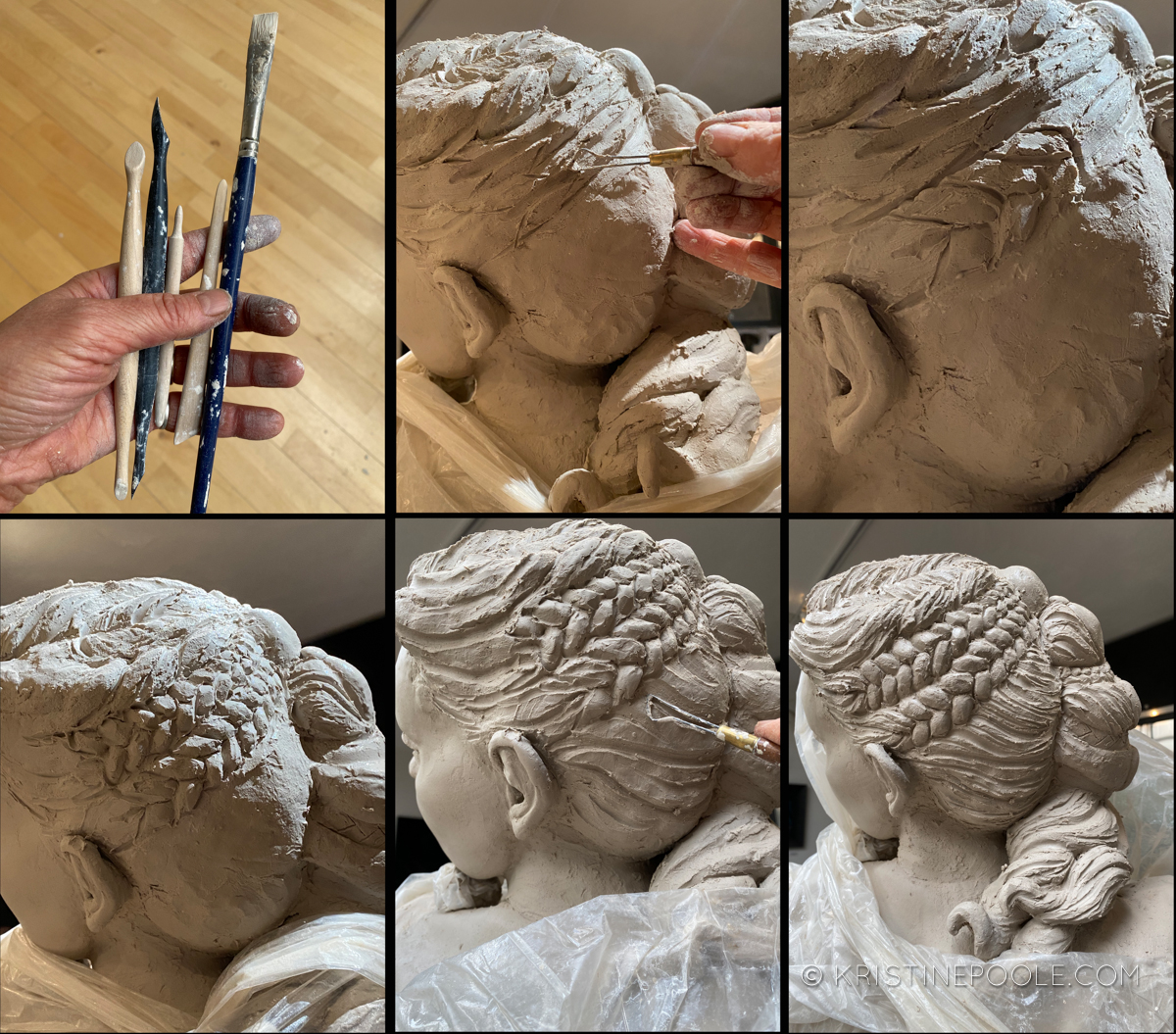
Braided Hairstyle Process, Step 4
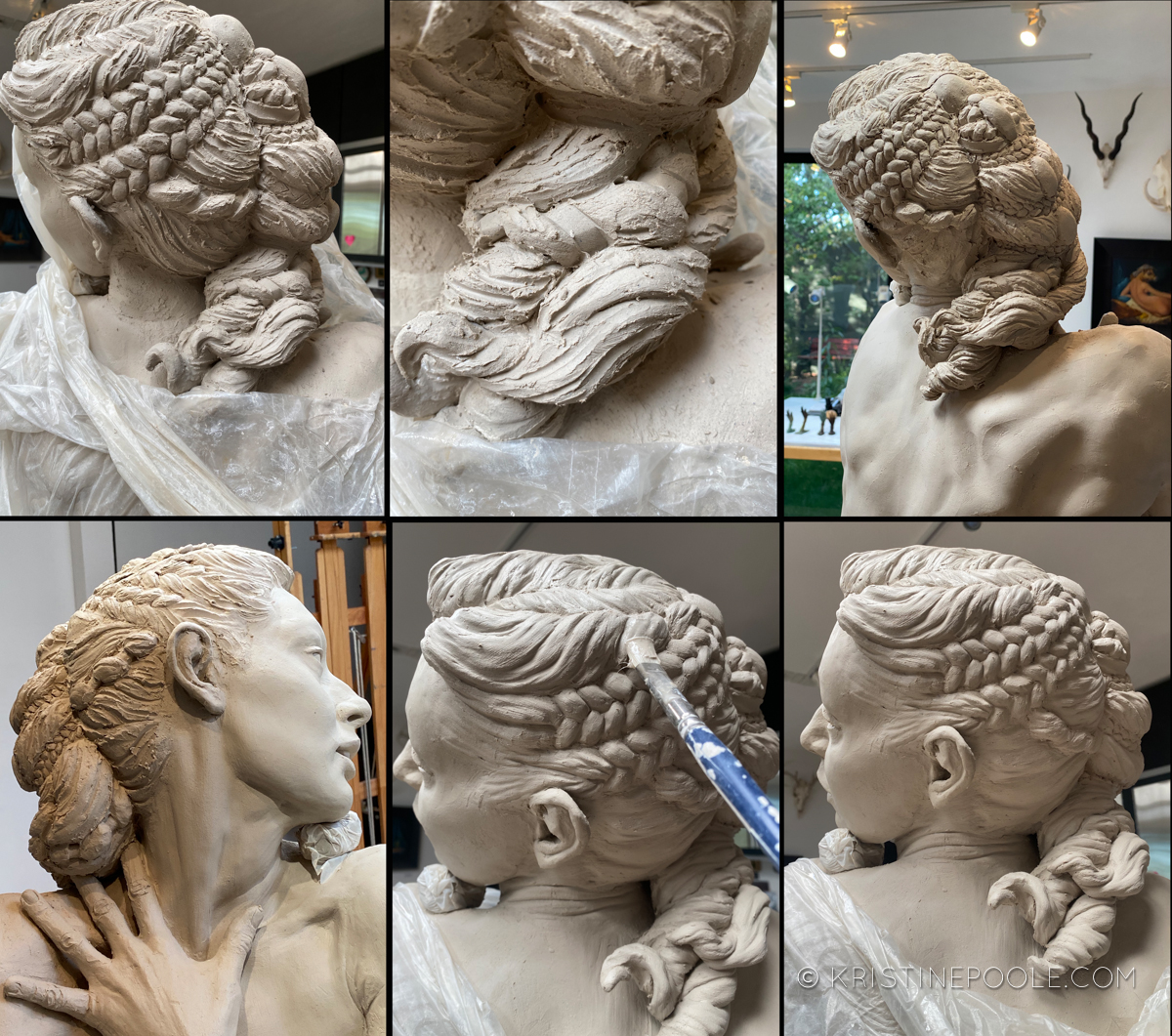
Braided Hairstyle Process, Step 5
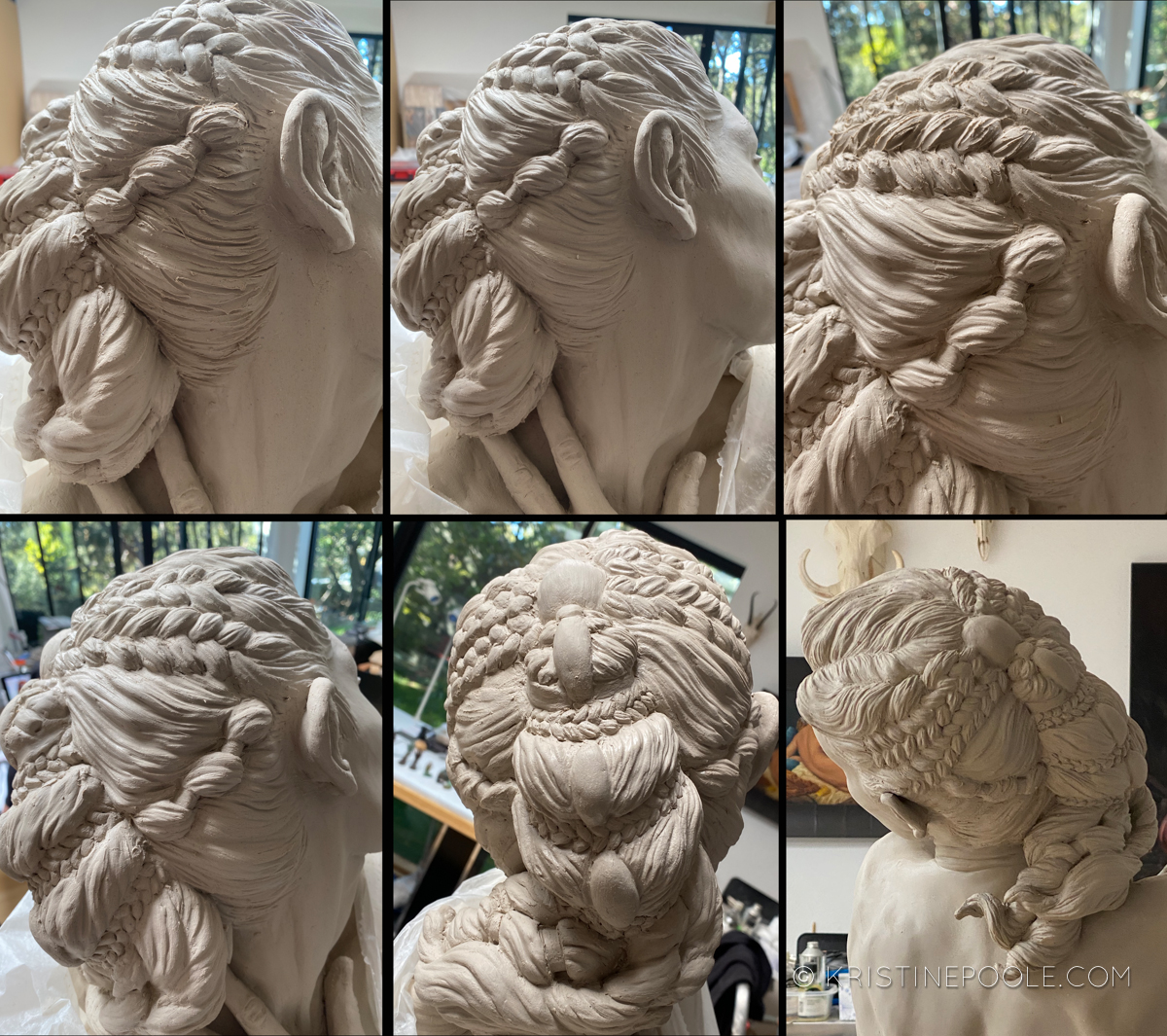
Braided Hairstyle Process, Option 2

Hair Examples and Ideas
1) A Bevy of Braids: Here are several examples of different ways I’ve integrated braids into the volumes of hair:
2) Twisty-turny: I also often use twists in the same way as braids. They just create a different sort of pattern and texture.
3) Flowing Hair: While my inclinations tend toward hairstyles that keep most of the hair “contained” so it doesn’t cover too much of the anatomy or face, when I’m approaching hair that is loose or flowing, I follow the same process: rough in volumes, divide masses, further divide and texture. For long, straight-ish hair, I pay particular attention to not drawing too many long parallel lines. Leaving some lines incomplete lets the viewer’s eye fill in the detail and makes the hair more believable.
4) Hair with Texture: Hair with more wave, curl, mass or unusual texture can be even more interesting to sculpt. I sometimes leave the sculpting marks a bit more aggressive to emphasize the designs the curls make. Again, I try to keep the patterns and lines having something of a random quality, not manufactured.
5) A couple samples that emphasize the textures and flow.
6) Now we get to the really fun stuff! What about adding embellishments: jewelry, tiaras, horns, headdresses, flowers… and maybe a random crab or frilled lizard? Here’s where the imagination can play!
Hope this inspires some experimentation the next time you’re faced with the eternal question: “what should I do with my hair today?”
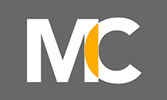
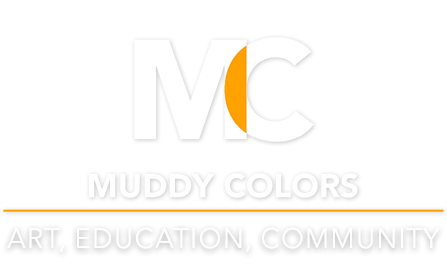
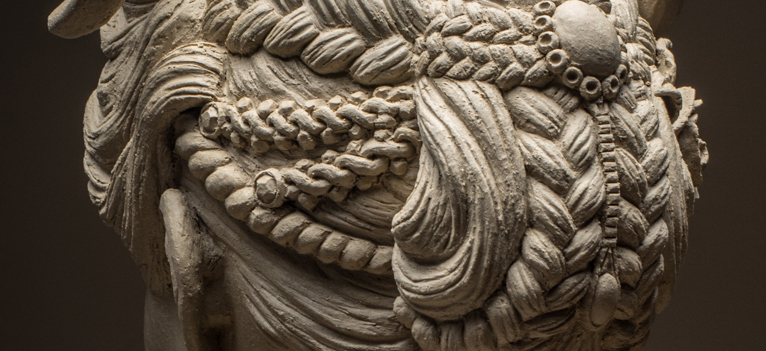
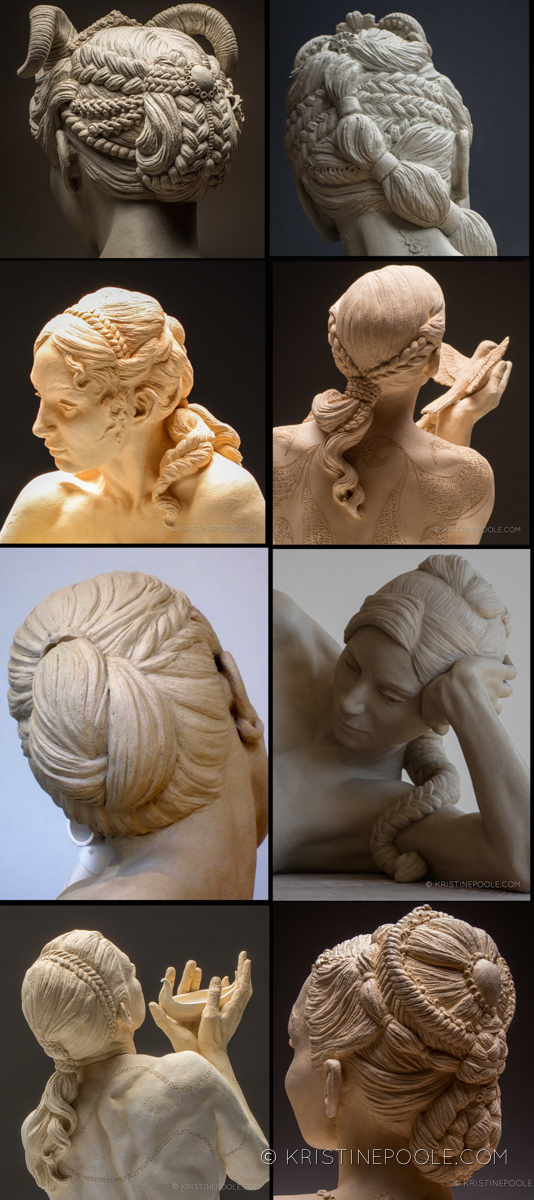
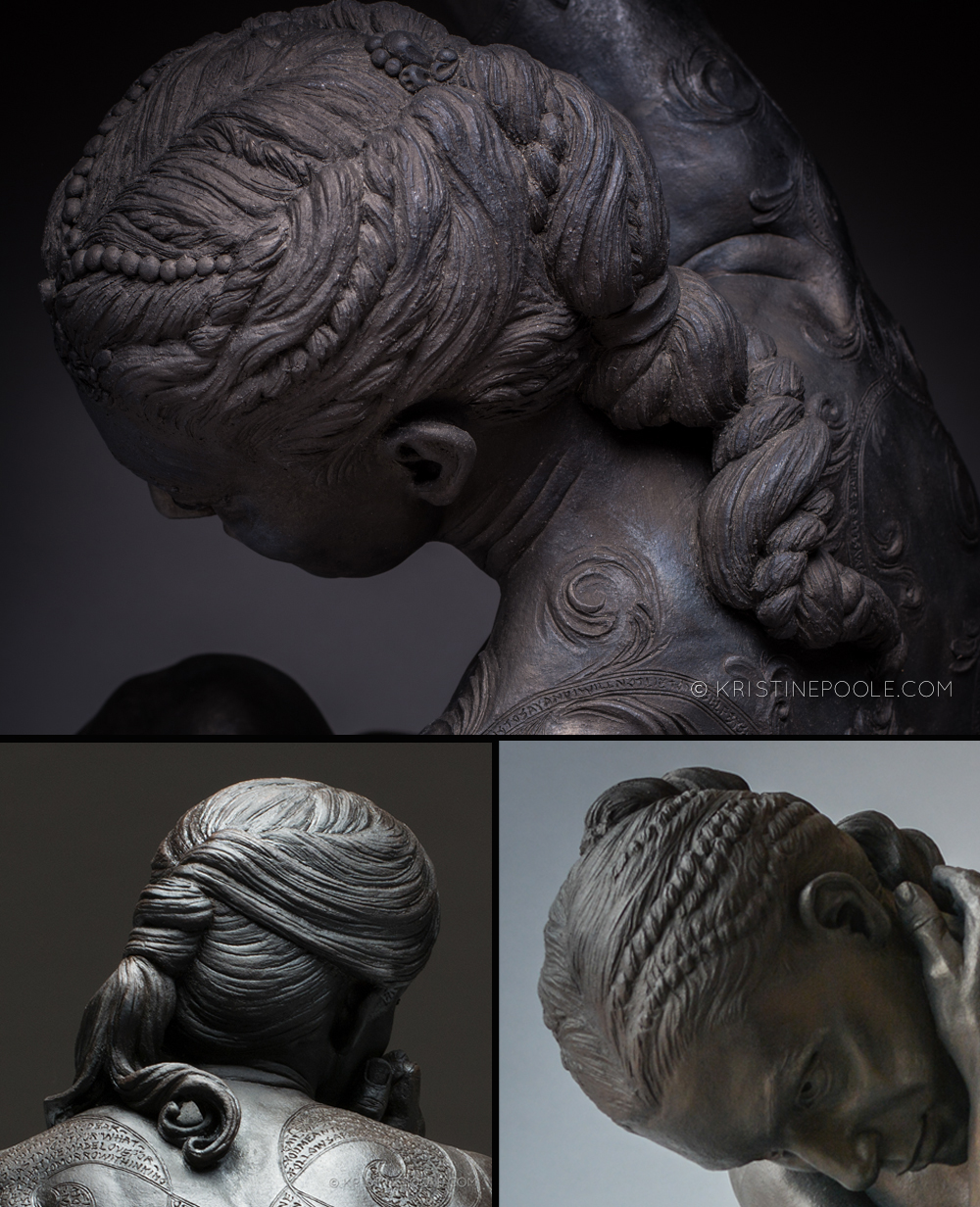
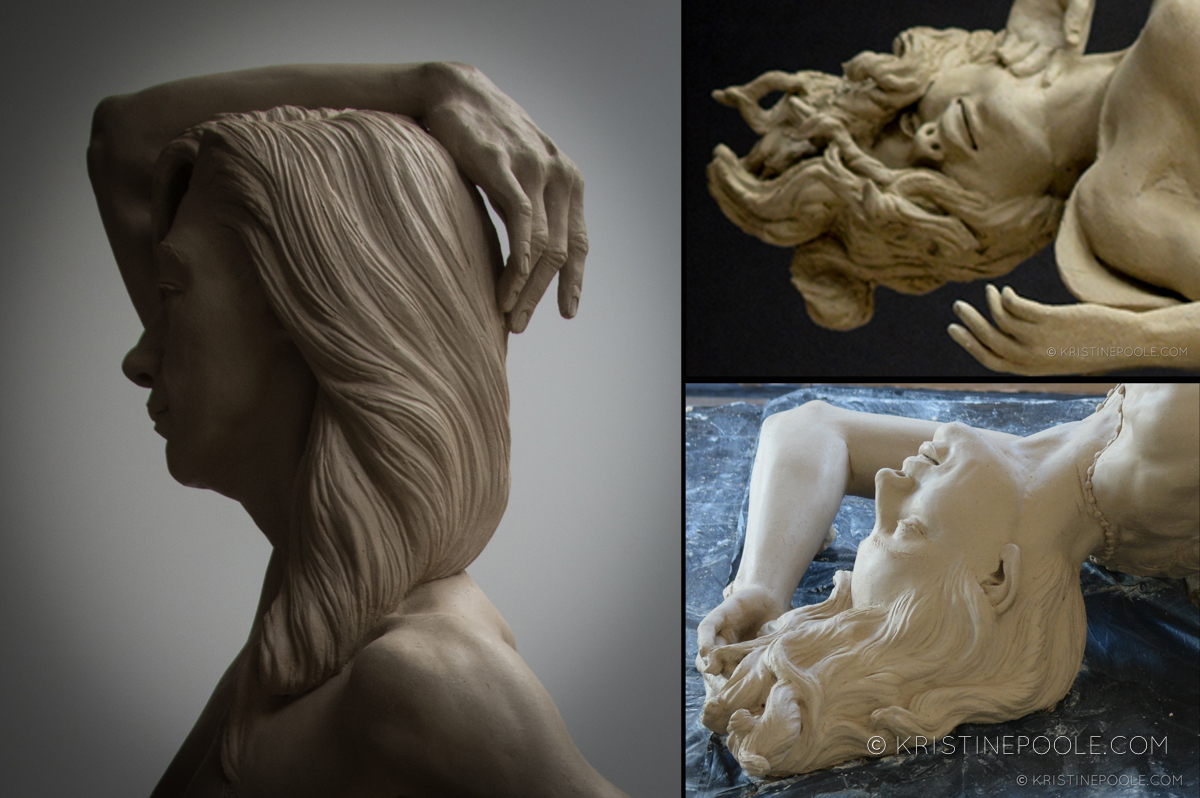



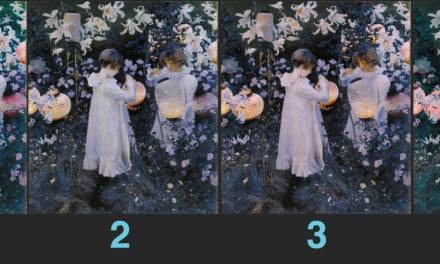
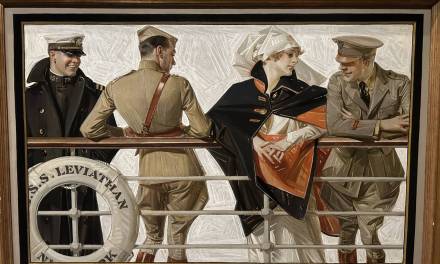
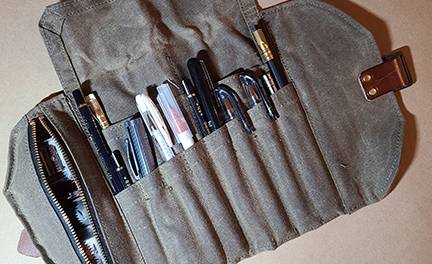
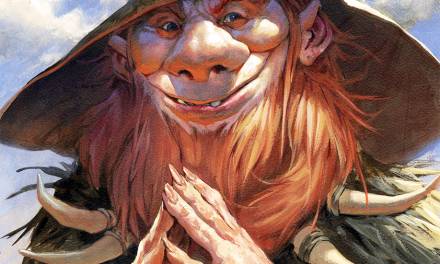
Recent Comments